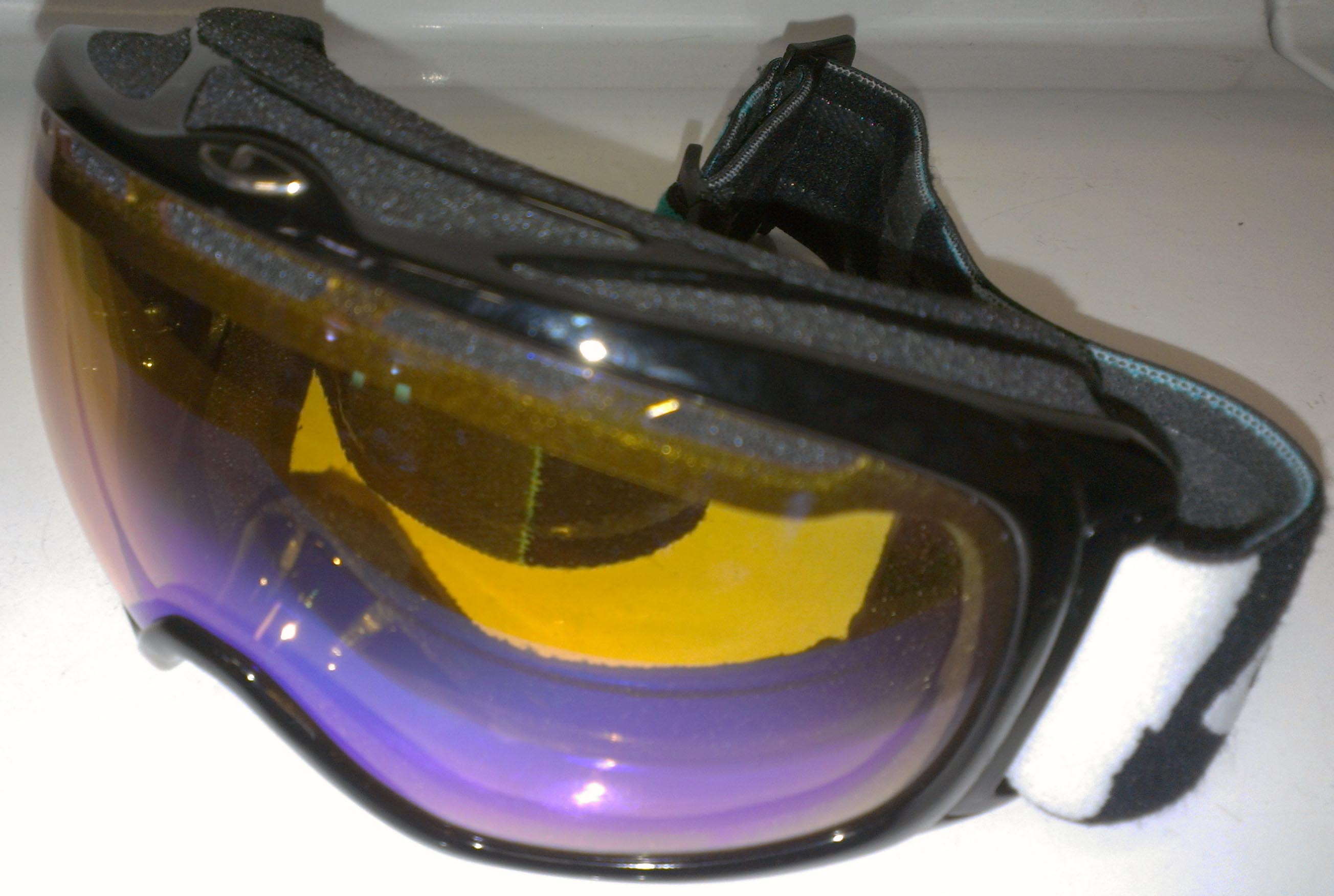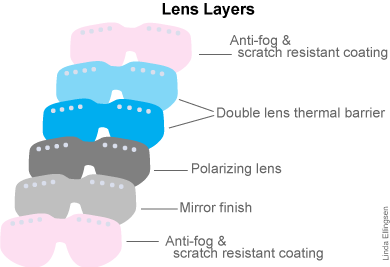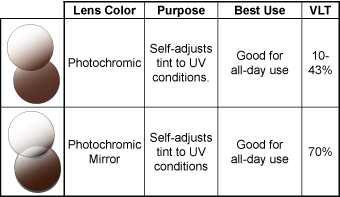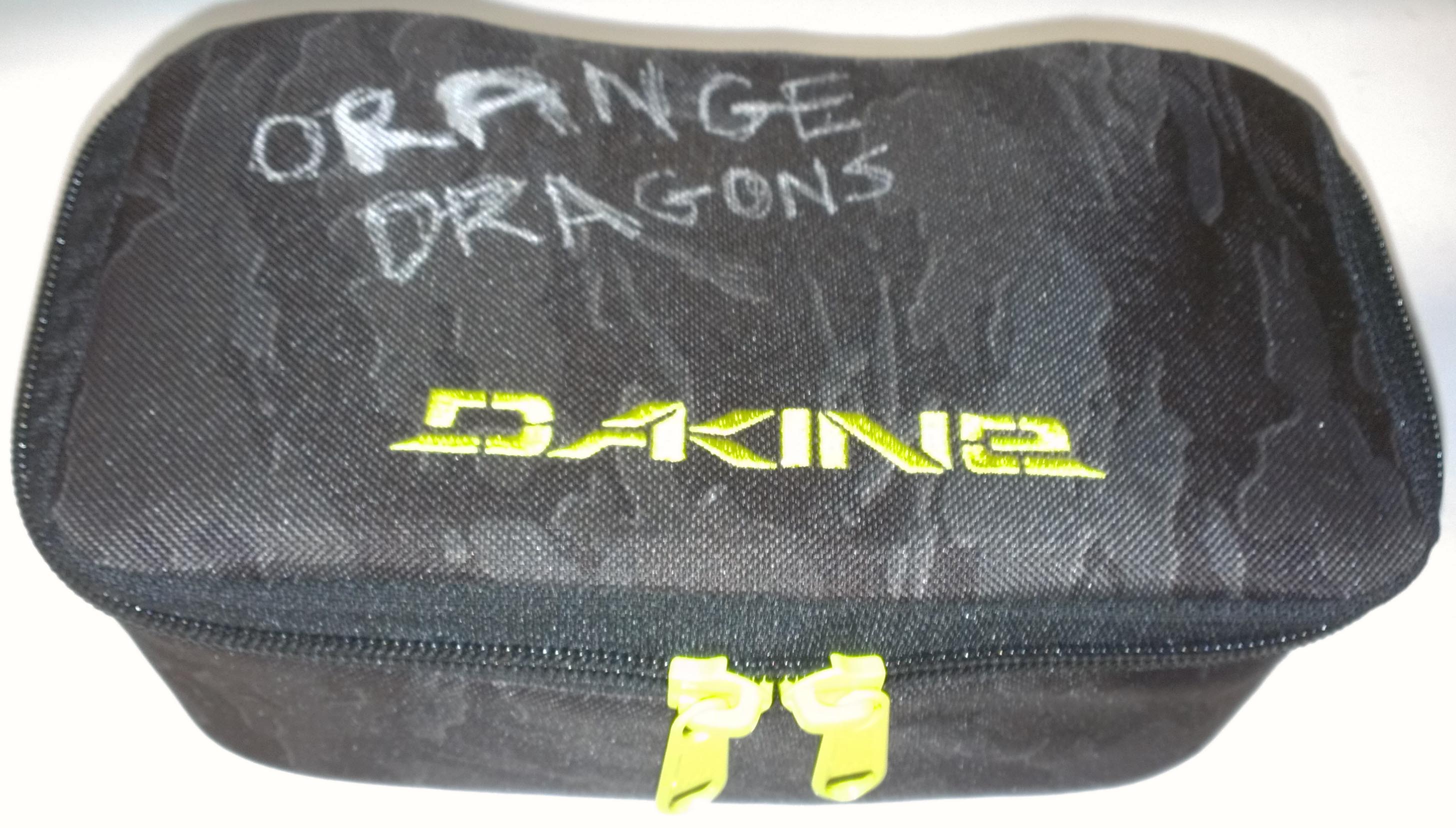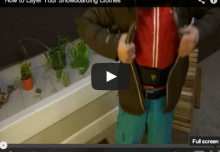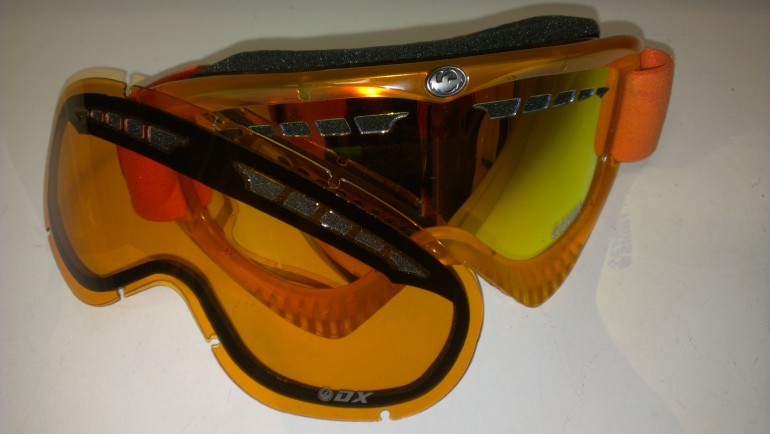
WHAT KIND OF GOGGLES SHOULD I WEAR?
Did you every think to yourself, “What kind of goggles should I wear for different conditions?”
…Or did you think one pair was good for all conditions?
Have you always thought that one pair of goggles was sufficient for any type of weather? Then get ready for your experience on the snow to get a whole lot better…visually, at least!
This article covers what types of goggles you should wear for various conditions and why wearing the right goggles is critical to your eyes and your safety!
****************************************
First, let’s cover the types of weather you may encounter out there and what type of goggles you should wear for various conditions:
Sunny (a.k.a. Bluebird):
Best visibility, but very bright conditions. The white snow reflects the sunlight and this is typically when people wearing storm (clear or very lightly tinted) goggles get snow blindness.1
Type of Goggles: Dark tinted lenses ONLY!
Preferably, wear goggles with UV protection or some sort, ideally polarized or photo chromatic lenses. Wearing light or medium-tinted lenses can lead to snow blindness and possible permanent damage to your eyes…protect them!
______________________________
Mostly Sunny:
Good visibility, with periods of flat light. More sun than clouds. Still bright most of the time. Some clouds, but mainly passing through only blocking the sun for short periods.
Type of Goggles: Dark or medium tinted lenses.
Ideally, you’re still wearing your bluebird goggles, but if the conditions are such that you’re having trouble seeing when the sun is behind clouds due to increasing cloud cover and the flat light is simply making it too difficult to distinguish the changing terrain beneath your feet, then try wearing medium-tinted lenses so you still have protection from the sun when it’s out but aren’t crashing because you couldn’t see that mogul in front of you! They make lighter tinted goggles that are polarized, so look for a good pair of these for days with mixed sun & clouds.
______________________________
Mostly Cloudy:
Flatter light, with periods of good visibility. More clouds than sun…days when the sun is only showing itself here and there throughout the day.
Type of Goggles: Medium or Light-tinted lenses.
Do not wear your bluebird goggles! Depending on how much sun is poking out, you can often wear medium-tinted lenses, but if it’s a day with minimal sunshine then go ahead and pull out your storm goggles or your orange, yellow, or rose medium-tinted lenses. There’s not enough sunlight when it’s sporadic to do any permanent damage to your vision, however, dark lenses can be your undoing if you hit a textured section in flat light. Wearing medium or light tinted lenses will help your visibility, keeping you on your feet and off the ground!
______________________________
Overcast:
Flat light. No direct sunlight and no precipitation. If suns breaks through, it’s only for the briefest of moments.
Type of Goggles: Light-tinted lenses (Storm Goggles).
Typically, orange, yellow, or rose light-tinted lenses are best for overcast conditions. They will brighten things up for you and help you see the texture of the snow, avoiding crashing simply because you didn’t see the bump or drop in time to compensate.
______________________________
In the Fog or Clouds:
Zero or next to zero visibility. Flat light conditions. You can barely see the ground in front of you, especially when moving down the mountain. Most often these conditions occur at the top of the mountain and once you’ve ridden down the mountain a ways you will get below the fog and visibility will improve, however, with flat light if it’s still overcast. This can be a good time to ride the trees if it’s a powder day, as it’s easier to spot trees from further away…and unlike people, they are stationary! (HINT: Avoid the dark spots…they’re either people or trees!)
Type of Goggles: Light tinted or Clear lenses (Storm Goggles).
Lights or Clears are certainly best. Ride with caution, as you will be unable to distinguish undulations and pitfalls in the snow and potentially injure yourself. Ride runs you’re familiar with and slow down to compensate for the conditions. You don’t get do-overs if you hit a tree, a person, or end up face down in a tree well. Be safe out there!!!
______________________________
Rain – From Top to Bottom of Mountain:
Super buzzkill conditions. Hopefully you never have to experience this, but it has been known to happen! If you’re that hardcore and insist on riding when it’s raining, have somewhere to change and something to change into when you are done riding to avoid catching a cold…or just don’t ride that day! (Remember: Getting wet sucks, but riding on a wet day beats work or school!)
Type of Goggles: Light tinted or Clear lenses (Storm Goggles).
Your goggles are going to get soaked, along with the rest of you, no matter what you’re wearing. By wearing a helmet, you can help prolong the time it takes for your goggles to get soaked, but if you plan on staying out a bit longer bring an extra pair of goggles (and layers, if possible) so you can get back out there and stay dry & warm! (HINT: Wear your “beater” goggles because you’ll be wiping them a lot and you don’t want to scratch your sweet storm goggles you just spent big money purchasing!)
______________________________
Rain/Snow Mix – For Warm & Wet Snow, ~36ºF or higher temps, in general:
Again, super buzzkill conditions. Not much better than rain, as you will still be wet at the end of the day! The difference is that as you ascend on the lift, the rain will turn to snow and the top of the mountain should be more fun to ride as long as it hasn’t rained all the way to the top at some point. Same as rain, if you decide to ride in these conditions, have dry clothes and backup goggles on standby if you plan on doing more than a few runs.
Type of Goggles: Light tinted or Clear lenses (Storm Goggles).
Same as rain, your goggles are going to get soaked, however, when the wet snowflakes hit your goggles they will splatter, further reducing your visibility from just being in rain. By wearing a helmet, you can help prolong the time it takes for your goggles to get soaked, but if you plan on staying out a bit longer bring an extra pair of goggles (and layers, if possible) so you can get back out there and stay dry & warm! (HINT: Wear your “beater” goggles because you’ll be wiping them a lot and you don’t want to scratch your sweet storm goggles you just spent big money purchasing!)
______________________________
Snowing (a.k.a Dumping) – Cold & Dry Snow, ~36ºF or lower temps, in general, ideally below freezing for best snow:
THIS IS THE BEST!!! We live for riding storm days and the bluebirds that follow. These days are usually ideal because there are fewer people on the mountain, leaving stashes ripe for the picking!Visibility will can be very low on storm days, so ride parts of the mountain that you’re familiar with – this is not the day to explore unfamiliar backcountry and find yourself on a $10,000 helicopter ride back to civilization! (HINT: Avoid the dark spots…they’re either people or trees!)
Type of Goggles: Light tinted or Clear lenses (Storm Goggles).
Different storms may call for different types of lenses, but it really comes down to personal preference here. If you prefer clear lenses on stormy days, then wear your clears! Some of us prefer rose or amber lenses, while others like yellows or oranges. There is no wrong choice here with respect to the tint on the lenses, so pick a pair that works for you.
****************************************
Next, let’s look at the types of lenses available:
There is a ton of variation out there for the darkness or lightness of lenses, also known as the VLT, or Visible Light Transmission.
- Lighter lenses have a HIGHER light transmission percentage because they let more light through. (Conditions: Mostly Cloudy, Overcast, Fog, Clouds, Rain, Snow)
- Darker lenses have a LOWER light transmission percentage because they let less light through. (Conditions: Sunny, Mostly Sunny, Mostly Cloudy)
As you can see from the picture of my 2012 Dragon DX Skull Candy Orange Snow Goggles, they came with 2 Interchangeable lenses! This can be ideal, as it’s one less pair of goggles to pack…and you can are prepared for just about any conditions with one pair of goggles!
They came with the Red Ionized lenses VLT 20-25% (installed in pic) and Orange lenses VLT 35-40% (leaned against front of goggles in pic). While these particular Orange lenses have a low VLT, I personally would not wear them when there’s any chance of seeing the sun, but may opt to change them out for the last hour of sun while I’m riding primarily in shadows, to better spot variations in the terrain in flatter light conditions.
I personally use the Red Ionized lenses for sunny days, the Orange lenses for flat light or overcast days, and have another pair of nearly clear Giro goggles (with a hint of amber in them) that I like to wear on storm days so I have the best visibility.
As you can see from comparing the pictures, the Giro lenses are much lighter than the Amber lenses from the Dragon goggles above, making the Giros ideal for storm riding.
Here are some charts showing the various types of lenses.2
Standard Lenses:
Lens Features:
Mirrored lenses reflect more light and also act like 1-way mirrors so nobody can see your eyes! Polarized lenses reduce glare from the sun reflecting off of snow or water, making them ideal for sunny days.
Some lenses are Photochromic, which adjust to light in various light conditions. These are like sunglasses you can wear while you’re driving and keep on when you walk into a store because they lenses significantly lighten in tint. Then, when you come back out into the sun, they darken again! They react to UV rays, meaning they will stay lightest on snowy/overcast days and be darkest on sunny days.
These goggles are ideal for Sunny, Mostly Sunny, & Mostly Cloudy days because, as the light conditions change, the lenses will adapt. Also, for afternoon and tree riding, you’ll get back lost visibility from riding in shadows. (Hint: It’s best to stop for a moment when entering a long section that doesn’t have direct sunlight on it to give your Photochromic lenses a moment to adjust!)
Goggles Cases:
A great new product on the market is the DaKine goggles case. As you can see from the below pics, they not only protect your goggles and are soft-reinforced around the sides, with vents built in to help dry your goggles when in storage, they also have a spare lens slot! I used a silver permanent marker to write which goggles are in this case.
These are great for storing and moving your goggles around without the threat of scratching your favorite lenses! (HINT: A wise person once said, treat your goggles like a record – no scratches!!!)
Bonus Section!!!
Question: Why do my goggles keep fogging up in a snowstorm?
Answer: There could be a couple of reasons:
- If you are using really old goggles that don’t have the modern day anti-fog treatment on their lenses, then you could experience fogging on any given day in those things. Chuck ‘em, keep ‘em as loaners, or pass ‘em on to someone!
- If you have newer goggles with anti-fog treatment and they’re fogging up, it usually means you’ve got snow melting on the inside of your goggles. This can come from the obvious experience of crashing and losing your goggles, but more often than not, it does come from voluntary removing our goggles from our faces and putting it up on our snowed upon beanies. The warmed up goggles melt the snow on your beanie, causing a humid atmosphere inside the goggles – fogging them up!Don’t fret, though, there is a solution! I am a huge advocate for wearing a helmet for a number of reasons. One of these reasons is because when it is dumping, if you move your goggles up to on your forehead, they won’t fog! That’s right! Helmets are make of plastic and snow won’t stick to them, leaving a perfectly dry surface for your goggles to rest against. Look mom! No more fogged lenses!
Question: Can I buy one pair of goggles with interchangeable lenses?
Answer: YES!!!
There are pairs of goggles on the market that offer interchangeable lenses for various conditions. I actually own a pair of Dragons that I can do that with and they’re awesome! I have blue lenses with an orange mirrored front and super light orange-clear lenses for storm riding. They are great when traveling because that’s one less pair of goggles to pack.
I still carry a pair of medium tinted goggles for mostly cloudy to mostly sunny conditions, as the sunny lenses are too dark for those conditions and the storm lenses are too light for mostly sunny. If mostly cloudy starts showing me a lot of sun for even a section of the day, I could damage my vision…and I’m not doing that!


